453. Metoro Tau'a Ure used the
word hakaraoa 5 times when reading - under the strict
rule not to use more than one expression per glyph - tablets for Bishop Jaussen on Tahiti:
|
 |
 |
 |
 |
 |
|
Ba7-16 (267) |
Ca1-20 |
Ca9-6 (234) |
Cb10-1 |
Cb10-4 (392 + 234) |
|
ki te henua -
kua moe te manu utu
hakaraoa |
hakaraoa - te
henua |
ku
hakaraoa |
Ku
hakaraoa -
te inoino |
ku
hakaraoa |
Notably number 234 was
the number both for Ca9-6 and for
Cb10-4. Could 267 (Ba7-16) be the sum of
234 and 33? A quick loock at Ba1-33
reveals a kind of bird with a pronounced
ure in front, followed 3
paces later by an irregular koti
type of
glyph:
 |
 |
|
Ba1-31 |
Ba1-32 |
|
ko te
tagata |
haga |
 |
 |
|
Ba1-33 (Sun) |
Ba1-34 |
|
i te moa |
kua tuu |
 |
 |
|
Ba1-35 |
Ba1-36 (Mercury) |
|
ki te moa |
kua koti
ïa |
 |
 |
|
Ba1-37 |
Ba1-38 |
|
E te moa e |
ka vero
koe |
In the calendar
of the planets (the week) koti occurred also at Venus (in
Friday), because her orbit was
broken by periods of darkness between her
morning and evening appearances.

Like Mercury she was in an orbit
closer to the Sun than the
Earth, which meant she sometimes
had to be between the Sun and
the Earth, turning completely
invisible - ín the same way as
the Moon turned black when the
Sun was at her back side:
... The Moon was visible for 29
nights, and then her back side
(●) was bathed in the vitalizing
rays from Tane, making
her grow (tupu) once
again ...
... When the new moon appeared
women assembled and bewailed
those who had died since the
last one, uttering the following
lament: 'Alas! O moon! Thou has
returned to life, but our
departed beloved ones have not.
Thou has bathed in the waiora
a Tane, and had thy life
renewed, but there is no fount
to restore life to our departed
ones. Alas
...
|
WEDNESDAY (THE DAY OF
MERCURY) |
 |
 |
 |
 |
 |
 |
|
Hb9-33 |
Hb9-34 |
Hb9-35 |
Hb9-36 |
Hb9-37 |
Hb9-38 |
|
THURSDAY (THE DAY OF
JUPITER) |
 |
 |
 |
 |
 |
 |
 |
 |
 |
|
Hb9-39 |
Hb9-40 |
Hb9-41 |
Hb9-42 |
Hb9-43 |
Hb9-44 |
Hb9-45 |
Hb9-46 |
Hb9-47 |
|
FRIDAY (THE DAY OF
VENUS) |
 |
 |
 |
|
Hb9-48 |
Hb9-49 |
Hb9-50 |

In the H text
there is a distinction between
the
koti of the dark Mercury
and the koti of the bright
Venus:
 |
13 |
 |
|
Mercury |
Venus |
In the parallel P
text this was not so, possibly
because its creator was intent
on showing how they both were
inside the orbit of the Earth:
 |
9 |
 |
|
Mercury |
Venus |
In Ba1-36 we can
see the same type of assymmetry
between left and right (although
in mirror view), and we
could perhaps guess this assymmetry
visualized the fact that the
distance in days from morning to
evening star Venus was
much
greater (50 days) than the
distance from her evening to morning
star appearance (8 days):

There are 6
koti glyphs in the C text
and the last of them could
perhaps refer (or allude) to
the orbit of Venus (584 days),
because 392 + 337 - 584 = 145 (=
290 / 2):
 |
 |
 |
| Ca3-12 (63) |
Ca7-24 (192) |
Ca9-9 (237) |
 |
 |
 |
| Cb6-6 (392 + 121 = 513) |
Cb6-22 (392 + 137 = 529) |
Cb14-8 (392 + 337 = 729) |
From
Ca3-12 to Ca9-9 there
were 6 * 29 = 348 / 2
right ascension days
(and side b of the
tablet carries 348
glyphs).
|
JAN 19 |
20 |
21 (101
- 80) |
22 →
Mercury |
|
MARCH 17
(76 =
140 -
64) |
18 |
19 |
20
(79 = 22
+ 3 *
19) |
 |
 |
 |
 |
|
Ca3-9 |
Ca3-10 |
Ca3-11 |
Ca3-12
(63 = 7
* 9) |
|
tapamea
tagata
kua iri |
ki te
pa |
kua
hua |
ki te
kotiga |
|
CLOSE TO
THE FULL
MOON: |
|
May 20
(140)
4h
(60.9)
JĪSHUĬ
(Piled-up
Waters)
=
λ
Persei
(60.7)
COR
CAROLI
(α Canum
Ven.) |
21
υ Persei
(61.2) |
22 (21 +
121 =
142)
BEID
(Egg) =
ο¹
Eridani
(62.2),
μ
Persei
(62.8)
VINDEMIATRIX
( ε
Virginis) |
23
(11 * 13
= 143)
Al
Dabarān-2
(The
Follower)
HYADUM I
= γ
Tauri
(63.4)
*22 =
*63.4 -
*41.4 |
|
'April
23 (*60
- * 27 =
*33) |
24 |
25 |
26 (*36) |
|
"April 9
(140 -
41 = 99) |
10 (100) |
11 (*21) |
12 |
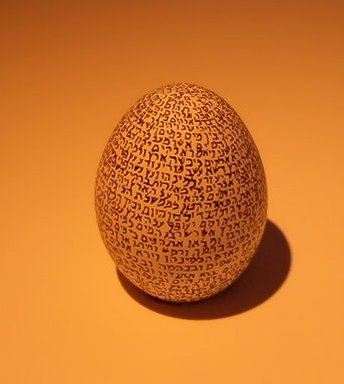 |
|
CLOSE TO
THE SUN: |
|
Nov 19
(140 +
183 =
323)
16h
(243.5)
ACRAB
(Scorpion)
= β
Scorpii,
JABHAT
AL ACRAB
(Forehead
of the
Scorpion)
= ω
Scorpii
(243.3),
θ Lupi,
RUTILICUS
= β
Herculis
(243.5),
MARFIK
(Elbow)
= κ
Herculis
(243.7),
φ
Herculis
(243.8)
|
20
ψ
Scorpii
(244.6),
LESATH
(Sting)
=
ν
Scorpii
(244.8) |
21
(*245)
χ
Scorpii
(245.1),
YED
PRIOR
(Hand in
Front) =
δ
Ophiuchi,
δ
Tr.
Austr.
(245.5) |
22
YED
POSTERIOR
(Hand
Behind)
=
ε
Ophiuchi,
RUKBALGETHI
SHEMALI
(Northern
Knee of
the
Giant) =
τ
Herculis
(246.6).
δ
Apodis
(246.7),
ο
Scorpii
(246.8) |
|
JAN
23
(=
80 -
57) |
24 |
25 |
26 |
|
MARCH
21
(80
=
144
-
64) |
22
(*1) |
23 |
24 |
 |
 |
 |
 |
|
Ca3-13 |
Ca3-14
(65
= 5
*
13) |
Ca3-15 |
Ca3-16 |
|
kiore
i te
henua |
tapamea
-
tagata
hoi
hatu |
ki
te
ariki |
kiore
i te
henua |
|
CLOSE
TO
THE
FULL
MOON: |
|
May
24
(144
= 80
+
64)
HYADUM
II =
δ¹
Tauri
(64.2) |
25
Net-19
(Crow)
AIN
(Eye)
=
ε
Tauri,
θ¹
Tauri,
θ²
Tauri
(65.7) |
26
no
star
listed
(66) |
27
no
star
listed
(67) |
 |
|
CLOSE
TO
THE
SUN: |
|
Nov
23
(144
+
183
=
327)
Heart-5
(Fox)
σ
SCORPII
(247.0),
HEJIAN
=
γ
Herculis
(247.2),
ψ
Ophiuchi
(247.7) |
24
ρ
Ophiuchi
(248.1),
KAJAM
(Club)
=
ω
Herculis
(248.3),
χ
Ophiuchi
(248.5),
SHE
LOW
(Market
Tower)
=
υ
Ophiuchi,
Tr.
Austr.
(248.7),
ζ
Tr.
Austr.
(248.8) |
25
Al
Kalb-16
(The
Heart)
/
Jyeshtha-18
(Eldest)
/
ANA-MUA-1
(Entrance
pillar)
ANTARES
= α
Scorpii
(249.1),
MARFIK
(Elbow)
= λ
Ophiuchi,
φ
Ophiuchi
(249.5),
ω
Ophiuchi
(249.8) |
26
(*250)
γ
Apodis
(250.1),
σ
Herculis
(250.3),
θ
Tr.
Austr.
(250.6),
τ
Scorpii
(250.7) |
|
JAN
27 |
28 |
29 |
30 |
|
MARCH
25
(84
= 27
+
57) |
26 |
27 |
28 |
 |
 |
 |
 |
|
Ca3-17
(84
- 16
=
68) |
Ca3-18
(69) |
Ca3-19 |
Ca3-20
→
Dramasa |
|
tapamea
-
tagata
rima
iri |
te
henua
te
hokohuki |
te
kava |
te
kiore
i te
henua |
|
CLOSE
TO
THE
FULL
MOON: |
|
May
28
(148)
Rohini-4
(The
Red
One)
/
Pidnu-sha-Shame-4
(Furrow
of
Heaven)
/
ANA-MURI-2
(Rear
pillar
- at
the
foot
of
which
was
the
place
for
tattooing)
ALDEBARAN
= α
Tauri
(68.2),
THEEMIN
= υ²
Eridani
(68.5) |
29
no
star
listed
(69) |
30
(→ 5
* 30
=
150)
no
star
listed
(70) |
31
TABIT
= π³
Orionis
(71.7),
π²
Orionis
(71.9)
320
(South
Pole
star,
Dramasa)
- 71
(Tabit)
=
249
(Antares) |
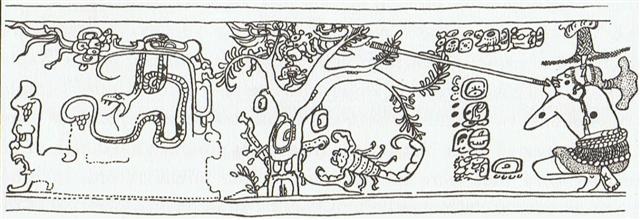
...
This
pot
depicts
one
of
the
Hero
Twins
(One-Ahaw
in
the
Classic
texts
and
One-Hunaphu
in
the
K'iche'
Popol
Vuh)
and
a
great
bird
who
is
trying
to
land
in a
huge
ceiba
tree
heavy
with
fruit.
This
mythical
bird
is
Itzam-Yeh,
Classic
prototype
of
Wuqub-Kaqix,
'Seven-Macaw',
of
Popol
Vuh
fame.
In
that
story,
in
the
time
before
the
sky
was
lifted
up
to
make
room
for
the
light,
the
vainglorious
Seven-Macaw
imagined
himself
to
be
the
sun.
Offended
by
his
pride,
the
Hero
Twins
humbled
him
by
breaking
his
beautiful
shining
tooth
with
a
pellet
from
their
blowgun.
This
pot
shows
One-Ahaw
aiming
at
the
bird
as
he
swoops
down
to
land
in
his
tree.
As
Itzam-Yeh
lands
on
his
perch,
the
text
tells
us
he
is
'entering
or
becoming
the
sky'.
This
particular
'sky-entering'
is
not
the
one
mentioned
in
the
Palenque
text.
It
is
the
final
event
that
occurred
in
the
previous
creation
before
the
universe
was
remade.
Before
the
sky
could
be
raised
and
the
real
sun
revealed
in
all
its
splendor,
the
Hero
Twins
had
to
put
the
false
sun,
Itzam-Yeh,
in
his
place.
If
the
date
on
this
pot
corresponds
to
that
pre-Creation
event,
as
we
believe
it
does,
then
Itzam-Yeh
was
defeated
in
12.18.4.5.0
1
Ahaw
3
K'ank'in
(May
28,
3149
B.C.)
... |
|
CLOSE
TO
THE
SUN: |
|
Nov
27
(148
+
183)
HAN
= ζ
Ophiuchi
(251.0) |
28
(332
=
149
+
183)
ζ
Herculis,
η
Tr.
Austr.
(252.1),
η
Herculis,
β
Apodis
(252.5) |
29
(300
+
33)
ATRIA
= α
Tr.
Austr.
(253.9) |
30
(*254
=
*71
+
*183)
Tail-6
(Tiger)
WEI
(Tail)
= ε
Scorpii,
η
Arae
(254.3),
DENEBAKRAB
= μ
Scorpii
(254.7) |
|
JAN
31 |
FEBR
1
(32
= 73
-
41) |
2 |
3 |
4
(115
-
80) |
|
MARCH
29
(88
→
Rigel) |
30
(32
+
57) |
31 |
APRIL
1 |
2 |
 |
 |
 |
 |
 |
|
Ca3-21
(→
March
21 →
Gregorian
equinox) |
Ca3-22
(73) |
Ca3-23 |
Ca3-24 |
Ca3-25
(→
March
25→
Julian
equinox) |
|
tagata
tuu
rima
ki
ruga |
te
maitaki |
te
henua |
Rei
hata
ia |
tagata
rogo |
|
Hata.
1.
Table,
bureau.
P
Pau.:
afata,
a
chest,
box.
Mgv.:
avata,
a
box,
case,
trunk,
coffin.
Mq.:
fata,
hata,
a
piece
of
wood
with
several
branches
serving
as a
rack,
space,
to
ramify,
to
branch;
fataá,
hataá,
stage,
step,
shelf.
Ta.:
fata,
scaffold,
altar.
2.
Hakahata,
to
disjoint;
hakahatahata,
to
loosen,
to
stretch.
P
Pau.:
vata,
an
interval,
interstice.
Mgv.:
kohata,
the
space
between
two
boards,
to
be
badly
joined;
akakohata,
to
leave
a
space
between
two
bodies
badly
joined;
hakahata,
to
be
large,
broad,
wide,
spacious,
far
off.
Mq.:
hatahata,
fatafata,
having
chinks,
not
tightly
closed,
disjointed.
Ta.:
fatafata,
open.
3.
Hatahata,
calm,
loose,
prolix,
vast.
Mgv.:
hatahara,
broad,
wide,
spacious,
at
one's
ease.
Ta.:
fatafata,
free
from
care.
Mq.:
hatahata,
empty,
open.
4.
Hatahata,
tube,
pipe,
funnel.
Churchill.
Sa.:
fata,
a
raised
house
in
which
to
store
yams,
a
shelf,
a
handbarrow,
a
bier,
a
litter,
an
altar,
to
carry
on a
litter;
fatāmanu,
a
scaffold.
To.:
fata,
a
loft,
a
bier,
a
handbarrow,
to
carry
on a
bier;
fataki,
a
platform.
Fu.:
fata,
a
barrow,
a
loft;
fatataki,
two
sticks
or
canes
attached
to
each
other
at
each
side
of a
house
post
to
serve
as a
shelf.
Niuē:
fata,
a
cage,
a
handbarrow,
a
shelf,
a
stage,
(sometimes)
the
upper
story
of a
house.
Uvea:
fata,
a
barrow,
a
bier.
Fotuna:
fata,
a
stage.
Ta.:
fata,
an
altar,
a
scaffold,
a
piece
of
wood
put
up
to
hang
baskets
of
food
on;
afata,
a
chest,
a
box,
a
coop,
a
raft,
a
scaffold.
Pau.:
fata,
a
heap;
afata,
a
box,
a
chest.
Ma.:
whata,
a
platform
or
raised
storehouse
for
food,
an
altar,
to
elevate,
to
support.
Moriori:
whata,
a
raft.
Mq.:
fata,
hata,
hataá,
shelves.
Rapanui:
hata,
a
table.
Ha.:
haka,
a
ladder,
an
artificial
henroost;
alahaka,
a
ladder.
Mg.:
ata,
a
shelf;
atamoa,
a
ladder;
atarau,
an
altar.
Mgv.:
avata,
a
coffer,
a
box.
Vi.:
vata,
a
loft,
a
shelf;
tāvata,
a
bier.
The
Samoan
fata
is a
pair
of
light
timbers
pointed
at
the
ends
and
tied
across
the
center
posts
of
the
house,
one
in
front,
the
other
behind
the
line
of
posts;
rolls
of
mats
and
bales
of
sennit
may
be
laid
across
these
timbers;
baskets
or
reserved
victuals
may
be
hung
on
the
ends.
The
litter
and
the
barrow
are
two
light
poles
with
small
slats
lashed
across
at
intervals.
The
Marquesan
fata
is a
stout
stem
of a
sapling
with
the
stumps
of
several
branches,
a
hat
tree
in
shape,
though
found
among
a
barehead
folk.
These
illustrations
are
sufficient
to
show
what
is
the
common
element
in
all
these
fata
identifications,
light
cross-pieces
spaced
at
intervals.
With
this
for
a
primal
signifaction
it
is
easy
to
see
how
a
ladder,
a
raft,
a
henroost,
an
altar
come
under
the
same
stem
for
designation.
Perhaps
Samoan
fatafata
the
breast
obtains
the
name
by
reason
of
the
ribs;
it
would
be
convincing
were
it
not
that
the
plumpness
of
most
Samoans
leaves
the
ribs
a
matter
of
anatomical
inference.
Churchill
2.
...
Teke
said
to
Oti,
'Go
and
take
the
hauhau
tree,
the
paper
mulberry
tree,
rushes,
tavari
plants,
uku
koko
grass,
riku
ferns,
ngaoho
plants,
the
toromiro
tree,
hiki
kioe
plants
(Cyperus
vegetus),
the
sandalwood
tree,
harahara
plants,
pua
nakonako
plants,
nehenehe
ferns,
hua
taru
grass,
poporo
plants,
bottle
gourds
(ipu
ngutu),
kohe
plants,
kavakava
atua
ferns,
fragrant
tuere
heu
grass,
tureme
grass
(Diochelachne
sciurea),
matie
grass,
and
the
two
kinds
of
cockroaches
makere
and
hata.'
...
The
division
into
quarters
of a
28-series
can
be
applied
to
the
main
phases
of
the
moon
during
the
visible
period
as
was
as
to a
(reflex
of
the
old
world?)
sidereal
month.
The
separate
subgroup
(29
makere
- 30
hata)
consists
of
the
names
of
two
types
of
cockroaches,
but
in
related
eastern
Polynesian
languages
these
names
can
also
be
explained
on a
different
level.
MAO.
makere,
among
others,
'to
die',
and
whata,
among
others,
'to
be
laid
to
rest
on a
platform',
deserve
special
attention.
The
theme
hinted
at
is
one
of
death
and
burial.
In
our
scheme
they
occur
at
just
that
time
when
the
moon
'has
died'!
This
lends
further
support
to
the
lunar
thesis.
Barthel
2.
 |
|
CLOSE
TO
THE
FULL
MOON: |
|
June
1
π4
Orionis
(72.1),
ο¹
Orionis
(72.4),
π5
Orionis
(72.8)
*31.0
=
*72.4
-
*41.4 |
2
(336
-
183
=
153)
π¹
Orionis
(73.0),
ο²
Orionis
(73.4),
HASSALEH
= ι
Aurigae
(73.6),
π6
Orionis
(73.9) |
3
ALMAAZ
(The
Male
Goat)
= ε
Aurigae
(74.7),
HAEDUS
I =
ζ
Aurigae
(74.8) |
4
HAEDUS
II =
η
Aurigae
(75.9) |
5 (=
21 -
16)
5h
(76.1)
ε
Leporis
(76.0),
CURSA
= β
Eridani
(76.4),
λ
Eridani
(76.7) |
|
'May
5 |
6
(153
- 27
=
126) |
7 |
8 |
9 |
|
"April
21
(125
- 14
=
111) |
22
(153
- 41
=
112) |
23 |
24 |
25
(115
=
156
-
41) |
 |
|
CLOSE
TO
THE
SUN: |
|
Dec
1
Ophiuchi
(255.3),
GRAFIAS
(Claws)
=
ζ
Scorpii
(255.4)
*214.0
=
*255.4
-
*41.4 |
2
(336
= 4
*
84)
κ
Ophiuchi
(256.2),
ζ
Arae
(256.5),
ε
Arae
(256.8),
CUJAM
(Club)
=
ε
Herculi
(256.9) |
3
no
star
listed
(257) |
4
17h
(258.7)
ARRAKIS
= μ
Draconis
(258.7) |
5 (=
21 -
16)
Mula-19
(The
Root)
SABIK
(The
Preceding
One)
= η
Ophiuchi
(259.7),
η
Scorpii
(259.9) |
|
'Nov
4 |
5
(336
- 27
=
309) |
14
(*257
-
*27
=
*230) |
15 |
16 |
|
"Oct
21
(308
- 14
=
294) |
22
(336
- 41
=
295) |
23
(*257
-
*41
=
*216) |
24 |
25
(314
- 16
=
298) |
| 160 |
kotia |
kua rere |
ki te marama |
e moa |
haati kava |
e moa |
| Koti. Kotikoti. To cut with scissors (since this is an old word and scissors do not seem to have existed, it must mean something of the kind). Vanaga. Kotikoti. To tear; kokoti, to cut, to chop, to hew, to cleave, to assassinate, to amputate, to scar, to notch, to carve, to use a knife, to cut off, to lop, to gash, to mow, to saw; kokotiga kore, indivisible; kokotihaga, cutting, gash furrow. P Pau.: koti, to chop. Mgv.: kotikoti, to cut, to cut into bands or slices; kokoti, to cut, to saw; akakotikoti, a ray, a streak, a stripe, to make bars. Mq.: koti, oti, to cut, to divide. Ta.: oóti, to cut, to carve; otióti, to cut fine. Churchill. Pau.: Koti, to gush, to spout. Ta.: oti, to rebound, to fall back. Kotika, cape, headland. Ta.: otiá, boundary, limit. Churchill. |
 |
 |
 |
 |
 |
 |
| Ca9-9 (236 + 1) |
Ca9-10 |
Ca9-11 |
Ca9-12 |
Ca9-13 |
Ca9-14 (242) |
| CLOSE TO THE FULL MOON: |
| Nov 13
κ Librae (237.2), ι Serpentis (237.4), ψ² Lupi, ρ Oct. (237.5), γ Cor. Borealis, η Librae (237.7), COR SERPENTIS = α Serpentis (237.9) |
14
π Cor. Borealis, UNUK ELHAIA (Necks of the Serpents) = λ Serpentis (238.1), CHOW = β Serpentis (238.6) |
15
κ Serpentis (239.3), δ Cor. Borealis, TIĀNRŪ = μ Serpentis (239.5), χ Lupi, (239.6), ω Serpentis (239.7), BA (= Pa) = ε Serpentis, χ Herculis (239.8). κ Cor. Borealis, ρ Serpentis (239.9) |
16
λ Librae (240.0), β Tr. Austr. (240.3), κ Tr. Austr. (240.4), ρ Scorpii (240.8) |
17 (321)
Iklīl al Jabhah-15 (Crown of the Forehead) / Anuradha-17 (Following Rādhā) / Room-4 (Hare)
ξ Lupi, λ Cor. Bor.(241.1), ZHENG = γ Serpentis, θ Librae (241.2), VRISCHIKA = π Scorpii (241.3), ε Cor. Borealis (241.5), DSCHUBBA (Front of Forehead) = δ Scorpii (241.7), η Lupi (241.9 |
18
υ Herculis (242.3), ρ Cor. Borealis (242.4), ι Cor. Borealis (242.5), θ Draconis (242.6), ξ Scorpii (242.7)
*201 = *242.4 - *41.4
SCHEDIRr (α Cassiopeiae)
|
| JULY 15 |
16 |
17 |
18 |
19 (200) |
20 |
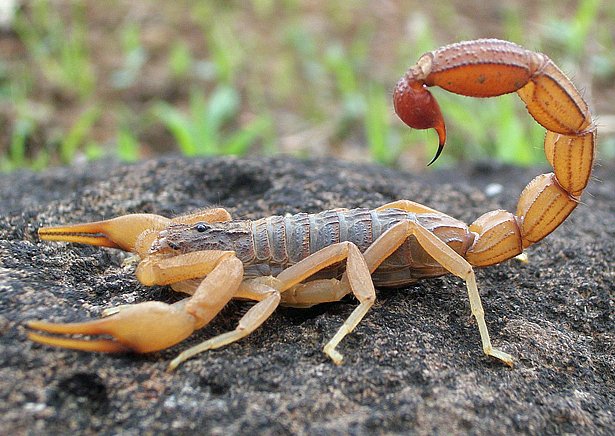 |
|
i
te
mauga
pu
hia |
E
rima
ki
te
henua |
koia
ku
honui |
erua
maitaki |
ko
koe
ra |
 |
 |
 |
 |
 |
 |
|
CLOSE
TO
THE
FULL
MOON: |
|
16h
(243.5) |
Ca9-16 |
Yed
Prior
(Hand
in
Front) |
Ca9-18
(246) |
Ca9-19 |
Kajam
(Club) |
|
Nov
19 |
20 |
21
(325) |
22 |
23 |
24 |
|
'Oct
23 |
24 |
25
(298
=
325
-
27) |
26 |
27 |
28 |
|
"Oct
9 |
10 |
11
(284
=
325
-
41) |
12 |
13 |
14 |
|
SEPT
16 |
17 |
18
(261
=
325
-
64) |
19 |
20 |
21 |
|
JULY
21 |
22 →
π |
23
(325
-
121
=
204) |
24 |
25 |
26 |
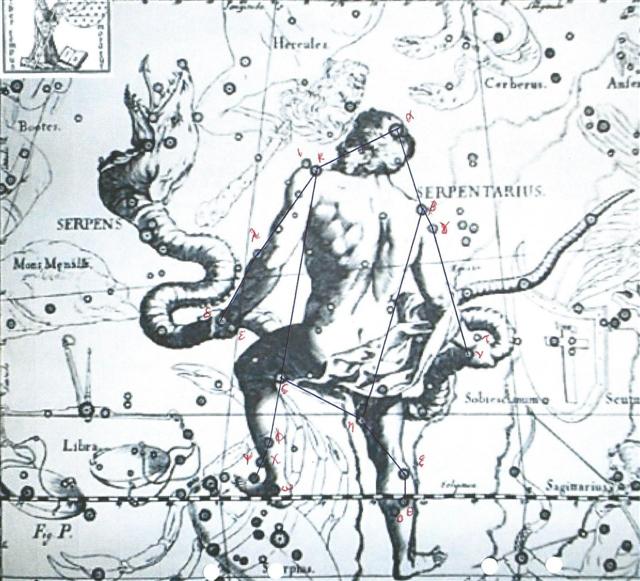 |
 |
128 |
 |
44 |
|
Ca3-12
(63) |
Ca7-24
(192) |
|
348
/ 2
=
174
= 6
* 29 |
 |
155 |
zero |
|
Ca9-9
(237) |
|
314
/ 2
=
157 |
|
120 |
 |
15 |
 |
199 |
 |
11 |
zero |
62 |
|
Cb6-6
(63
+
450) |
Cb6-22
(63
+
466) |
Cb14-8
(63
+
666) |
|
272
/ 2
=
136 |
400
/ 2
=
200
=
336
-
136 |
150
/ 2
= 75 |
The fertile
planets
Mercury and
Venus could
on Easter
Island have
provoked
thoughts
regarding an
egg, its
inhabitant,
and how its
shell was
broken
from efforts inside.
... They
were
Ranginui,
the Sky
Father, and
Papatuanuku,
the Earth
Mother, both
sealed
together in
a close
embrace.
Crushed
between the
weight of
their bodies
were their
many
children,
whose
oppression
deepened.
They yearned
to be free;
they fought
their
parents and
each other
to break
loose.
Tuumatauenga,
virile god
of war,
thrust and
shouted;
Tangaroa
of the
oceans
whirled and
surged;
Tawhirirangimaatea,
Haumiatiketike
and
Rongomatane,
of wild
foods and
cultivated
crops, tried
their best
but were not
successful;
and
Ruamoko,
god of
earthquakes,
yet to be
born,
struggled in
the
confinement
of his
mother's
womb ... Of
them all,
Taane Mahuta,
the god of
the forests,
was the most
determined;
he set his
sturdy feet
upon his
father's
chest, and
braced his
upper back
and
shoulders
against the
bosom of his
mother. He
pushed; and
they parted.
So the
world, as
the Maori
understand
it, came
into being
...
These
koti
glyphs could
have
depicted
broken egg
shells,
in which
case it
would have
been
natural to
count from
them and
ahead.
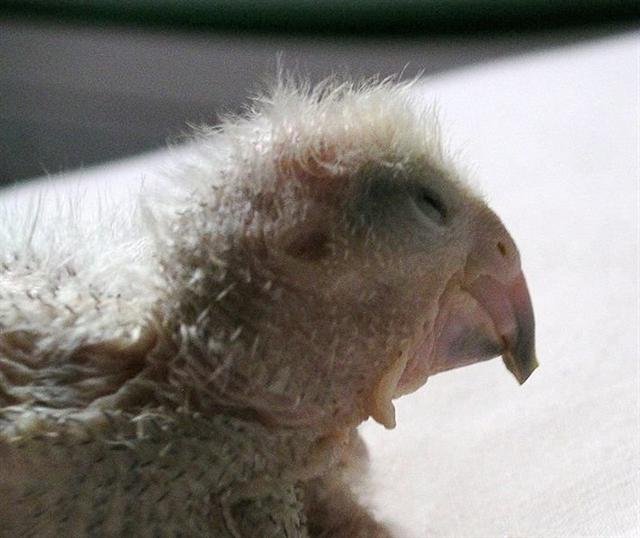
|



































